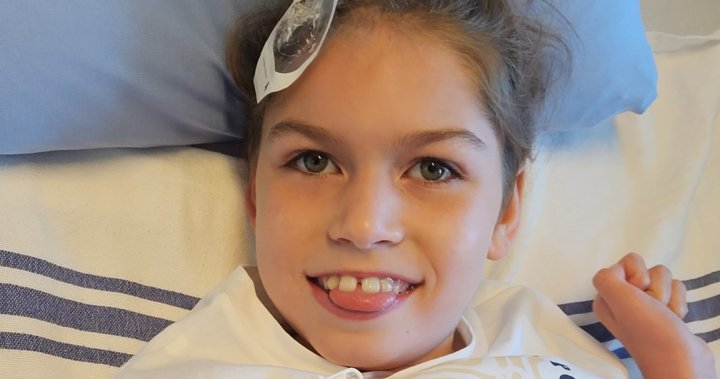I stood with Aimee Ambrosone on the shoreline of Kootenay Lake last month, watching her 16-year-old daughter Teagan skip stones across the glassy water. The teenager’s laughter carried on the breeze – a sound Aimee treasures more than most parents might, knowing how precarious Teagan’s future has become.
“Every morning, I wake up wondering if today’s the day they’ll change their minds,” Aimee told me, her eyes fixed on her daughter. “Or if it’s the day we’ll start seeing her get worse again.”
Teagan has Morquio A syndrome, an ultra-rare genetic disorder that affects just 13 people in British Columbia. Without treatment, the progressive disease breaks down her body’s ability to process certain sugars, causing damage to her bones, heart, and respiratory system.
For the past decade, Teagan received a medication called Vimizim through a special provincial program. The weekly infusions – costing approximately $400,000 annually – halted the disease’s progression. Then last October, the family received devastating news: the BC Ministry of Health would no longer cover the treatment.
“They essentially said her life isn’t worth the cost,” Aimee said, her voice catching. “How do you explain that to your child?”
BC’s Drug Review Committee determined the medication, while effective, didn’t meet their cost-benefit threshold – leaving the Ambrosone family and others fighting to restore access to life-sustaining treatment. This situation highlights the heartbreaking calculus behind drug funding decisions for rare diseases across Canada.
Dr. Millan Patel, research director at the Rare Disease Foundation, explains that families navigating rare disease care often find themselves caught between compassion and cost constraints.
“Our healthcare system wasn’t designed with rare diseases in mind,” Patel told me during an interview at his Vancouver office. “When a medication costs hundreds of thousands per patient, provinces struggle with sustainability while families face impossible choices.”
Unlike countries such as France and Germany that have specific rare disease frameworks, Canada’s patchwork approach leaves families vulnerable to sudden policy changes. The Canadian Organization for Rare Disorders has documented over 200 cases where patients lost access to previously covered treatments.
For Teagan, the medication didn’t just extend life – it transformed it. Before starting Vimizim, she struggled with constant fatigue, joint pain, and respiratory infections. The treatment allowed her to attend school regularly, join the swim team, and plan for college.
“I was finally just a normal teenager,” Teagan explained when I visited the family’s Nelson home. She showed me a photo album filled with images of hiking trips and school dances – experiences that seemed impossible before treatment. “Now they’re saying that wasn’t worth it.”
The family has appealed the decision twice, submitting medical records showing Teagan’s improvement on the medication. Both appeals were rejected. Now they’re considering selling their home to fund the treatment privately.
Across the kitchen table, Teagan’s father Rob spread out medical charts tracking his daughter’s lung function and mobility. “Look at these numbers before and after treatment,” he said, pointing to dramatic improvements. “How can they ignore this evidence?”
The BC Ministry of Health declined my multiple requests for an interview but provided a statement noting that “difficult decisions must be made to ensure sustainability of the healthcare system” and that “exceptional coverage decisions are reviewed periodically.”
What makes this case particularly troubling is that Teagan was showing documented benefits from the treatment. According to her metabolic specialist Dr. Sandra Sirrs at BC Children’s Hospital, removing a working therapy from a stable patient contradicts medical ethics.
“When we start a therapy that works, the expectation is we continue it,” Dr. Sirrs explained. “Patients shouldn’t have to reprove their worth every few years.”
While BC covers some rare disease medications, including treatments for cystic fibrosis and spinal muscular atrophy, the approval process lacks transparency. Patient advocates argue that traditional cost-effectiveness models disadvantage rare disease treatments, which typically cost more because development expenses must be recouped from fewer patients.
Durhane Wong-Rieger, president of the Canadian Organization for Rare Disorders, believes Canada needs a separate evaluation framework for rare disease drugs.
“These aren’t regular medications – they’re often the only treatment option available,” Wong-Rieger said. “Standard assessment models just don’t work for rare conditions.”
The federal government announced a Rare Disease Drug Strategy in 2019 with a promised $500 million annual fund, but implementation has stalled amid provincial-federal negotiations.
Meanwhile, in Nelson, the Ambrosone family has started fundraising while pursuing legal options. They’ve connected with three other BC families facing similar medication denials through social media, forming a support network and advocacy group.
One evening, as we sat on their deck watching the sunset over the mountains, Aimee showed me a letter Teagan had written to provincial health officials.
“I’m not just a budget item,” the teenager wrote. “I’m a person with dreams and plans. Please don’t take away the medicine that lets me have a future.”
For now, the family has cobbled together enough medication through compassionate access programs to last a few more months. They’re hopeful public pressure might change the province’s position before Teagan begins to deteriorate.
As I prepared to leave, Teagan showed me her college applications. She wants to study marine biology – a dream that seemed impossible before treatment and now hangs in limbo.
“I just want them to see me as a person,” she said, “not a number on a spreadsheet.”
The Ambrosones’ fight illustrates the profound human impact of drug funding policies and raises uncomfortable questions about how our society values the lives of those with rare diseases. For families like theirs, these aren’t abstract policy debates but matters of survival – calculations where the cost is measured not just in dollars, but in birthdays, graduations, and futures that might never come to pass.






